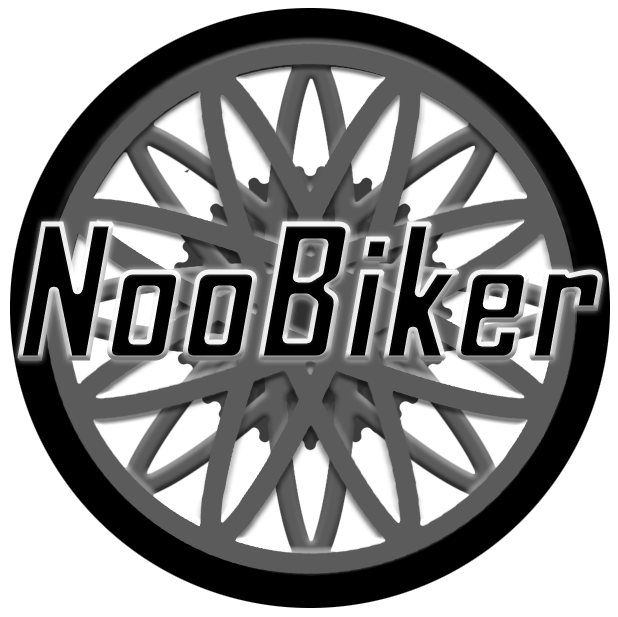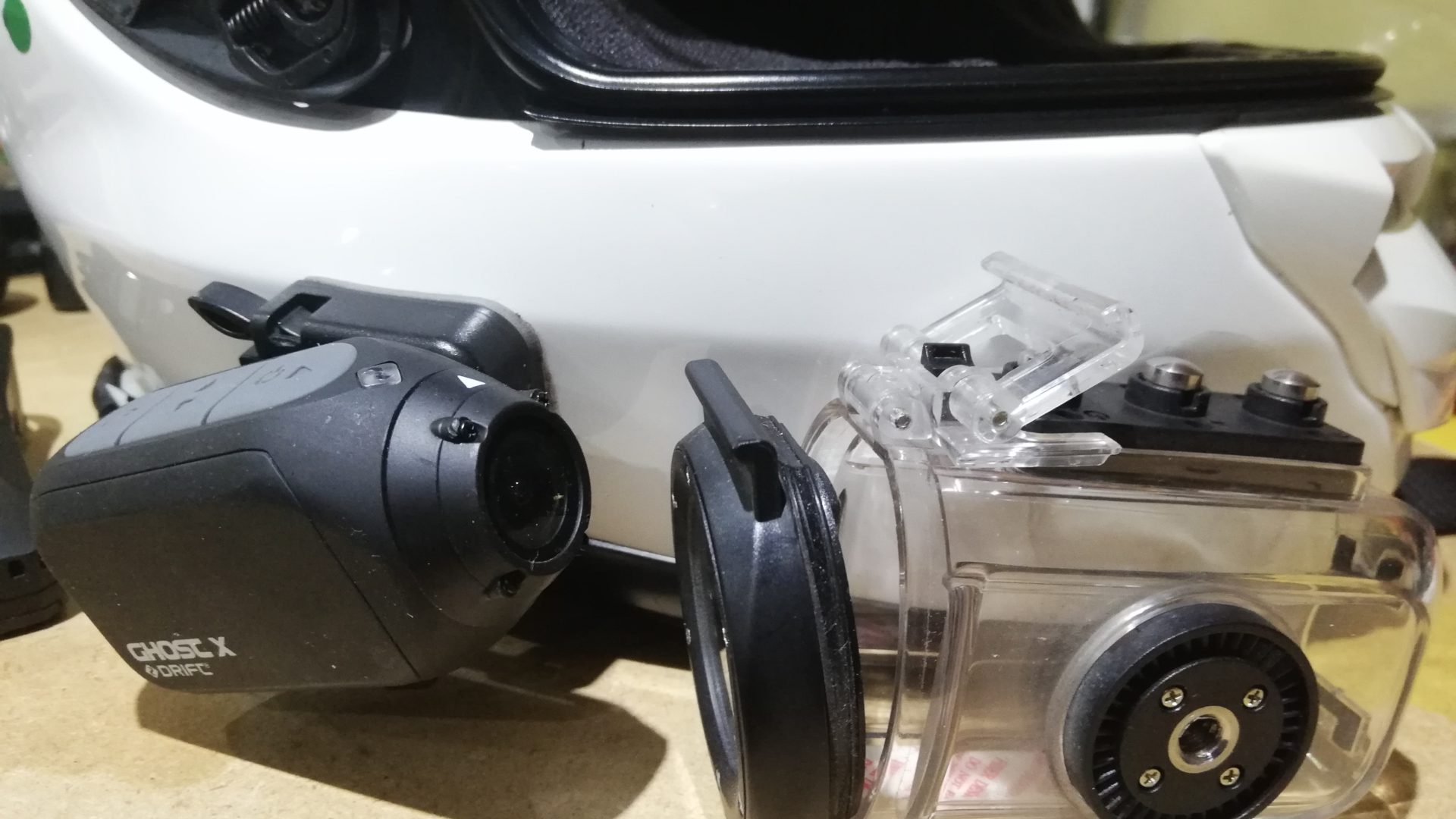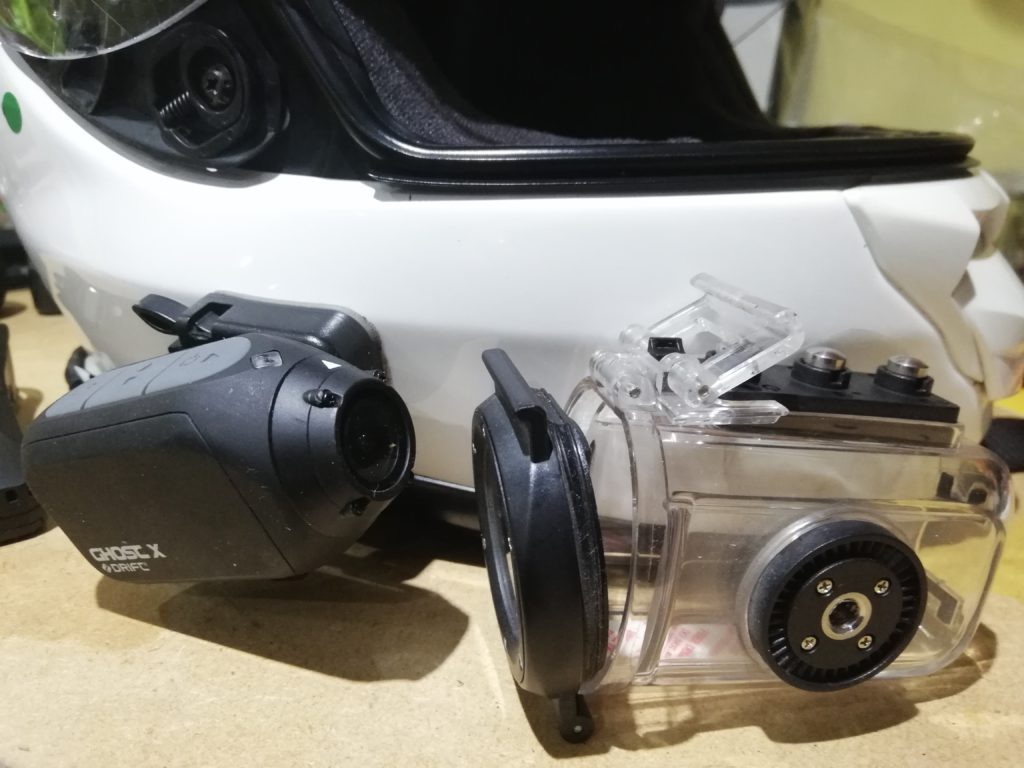Recording my rides
|
|
Motivation
I started recording my riding almost as soon as I got my first bike and started commuting into work on my L-plated Honda CBF 125. Back then, the motivation was very simple: if I get involved in an accident, I want my loved ones to know who was responsible and go after the bastards! Joking aside, I was worried about accidents, insurance claims and getting justice in the unlikely occurrence that it was someone else’s fault.
It did come in very handy when I got swiped by a car. The driver claimed I had been “zooming past” and he had no chance to see me. When shown the evidence of me filtering at 20-25 mph and being alongside the car when the indicator first when on, simultaneously with a swerve to the left (and into me), he changed his tune.
More to the point, and relevant to trying to be an advanced rider, it allowed me to review the whole situation with an experienced colleague (I had not joined IAM yet by that point). Once we went past the “who’s to blame” and started talking about how I could have kept myself safer, my eyes were opened.
Benefits
When it comes to accidents, being “in the right” doesn’t make the pain go away, or the cost of replacing gear (and higher insurance premiums) any less. In other words: prevention is always better than cure. So, reviewing that video with my mate (who himself was IAM), we were able to identify a few things I could and should have anticipated and done better. Since the camera was mounted on the side of my head, we were able to see exactly what my point of view was. I was filtering, traffic was stopped or moving very slowly, and we were coming up to where a slip road merged on to the dual carriageway where I was travelling.
“Junctions are always a hazard,” said my mate. “Cars are always looking to change lanes.” And there it was… as I was approaching the vehicle that eventually hit me, a gap had formed in the lane to the left. What are drivers looking for? Gaps! If I had my vision and observations up, I could have reasonably expected that car to want to move into that gap. I could have slowed, and/or swerved into that gap (increasing my safety cushion), or used my horn to warn them.
In other words, I could have found a better alternative than tumbling on the road, picking up my bike, assessing damage (broken lights, scuffed fairings and bar-ends and a badly bent gear lever on the bike; thankfully just a minor scratch on me), fixing said damage, ordering a new helmet etc.
So the main benefit I get from recording my rides is: “the ability to review my riding and the most significant moments from rides, so I can learn from them“.
The other benefit is creating and sharing videos with my riding mates. Most won’t have seen footage of themselves riding and seem to enjoy seeing themselves on camera.
What set up I use
I have full kit with links to sourcing them on my website, but in brief:
- A helmet-mounted camera. I currently use a Drift Ghost X, but my first camera was a Sena Tube. I prefer a side-mounted camera with small aerodynamic profile, to a big flat brick like a GoPro.
- This is mounted with a sticky pad to the side of my helmet.
- A waterproof housing for when it’s pouring down.
- A microphone inside the helmet.
- An external recorder inside my jacket or backpack.
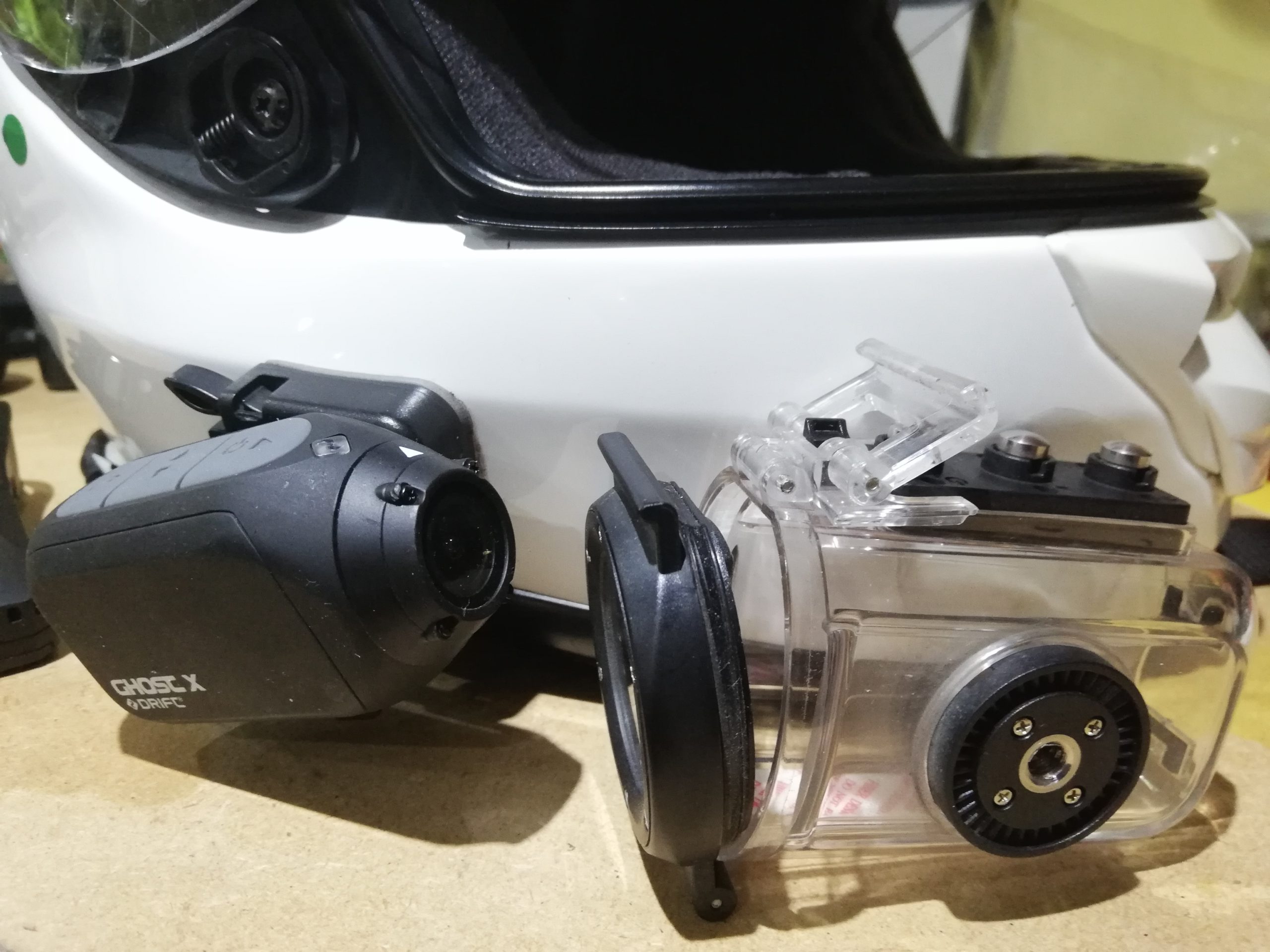
I want the camera to point where I’m looking, so I can check if I’m doing my shoulder checks, looking correctly through bends and what exactly I was able to see. There is one caveat to this, though: because the cameras use a wide angle lens for a nice wide field of recording, objects are a lot closer in reality than they appear on videos. Also, as a consequence, speed looks a lot slower…
I don’t like mounting the camera on the chin as that seems to me like just something that might fly into your face or throat in case of a slide. There is a risk that a side-mounted camera will get caught and cause torsion to my head in an accident, but I’m hoping the plastic / glue will just break off. I’ve seen cameras mounted on top of the helmet also, but I don’t want to look like a Teletubby. Also consider the wind drag at 60-70(ish) m.p.h…

I do have some GoPro cameras, but I still haven’t figured out where I want to mount them and what I want to use them for.
When I’m doing video logs, the camera is connected to a microphone inside my helmet. This has the additional benefit of cutting out wind noise, but the huge disadvantage that I can then clearly hear my swearing!
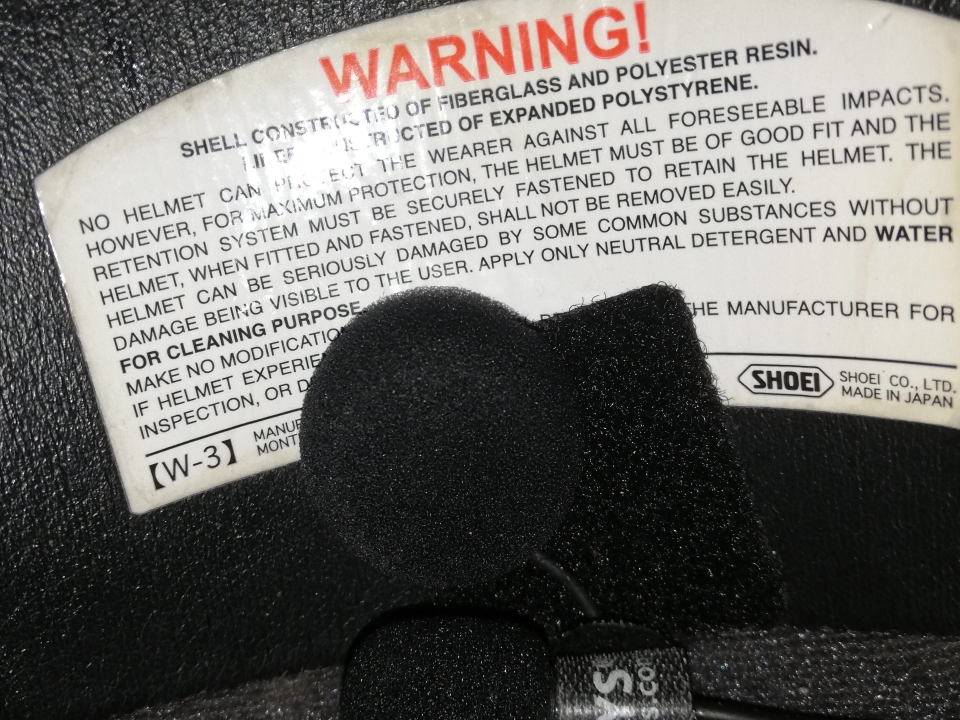
The camera is set up in “car DVR” mode, meaning once I start recording, it creates 10-minute clips and just keeps recording. Once the memory card is full, it just overwrites the oldest video and carries on. I can fit 520 minutes (52x 10-minute videos) of 1920×1080 pixel 30 frames-per-second video on a 64GB memory card. That’s over 8 hours, which should be good enough for at least a couple of days in the saddle.
To extend range, either swap in additional memory cards, or transfer files out into a hard drive periodically.
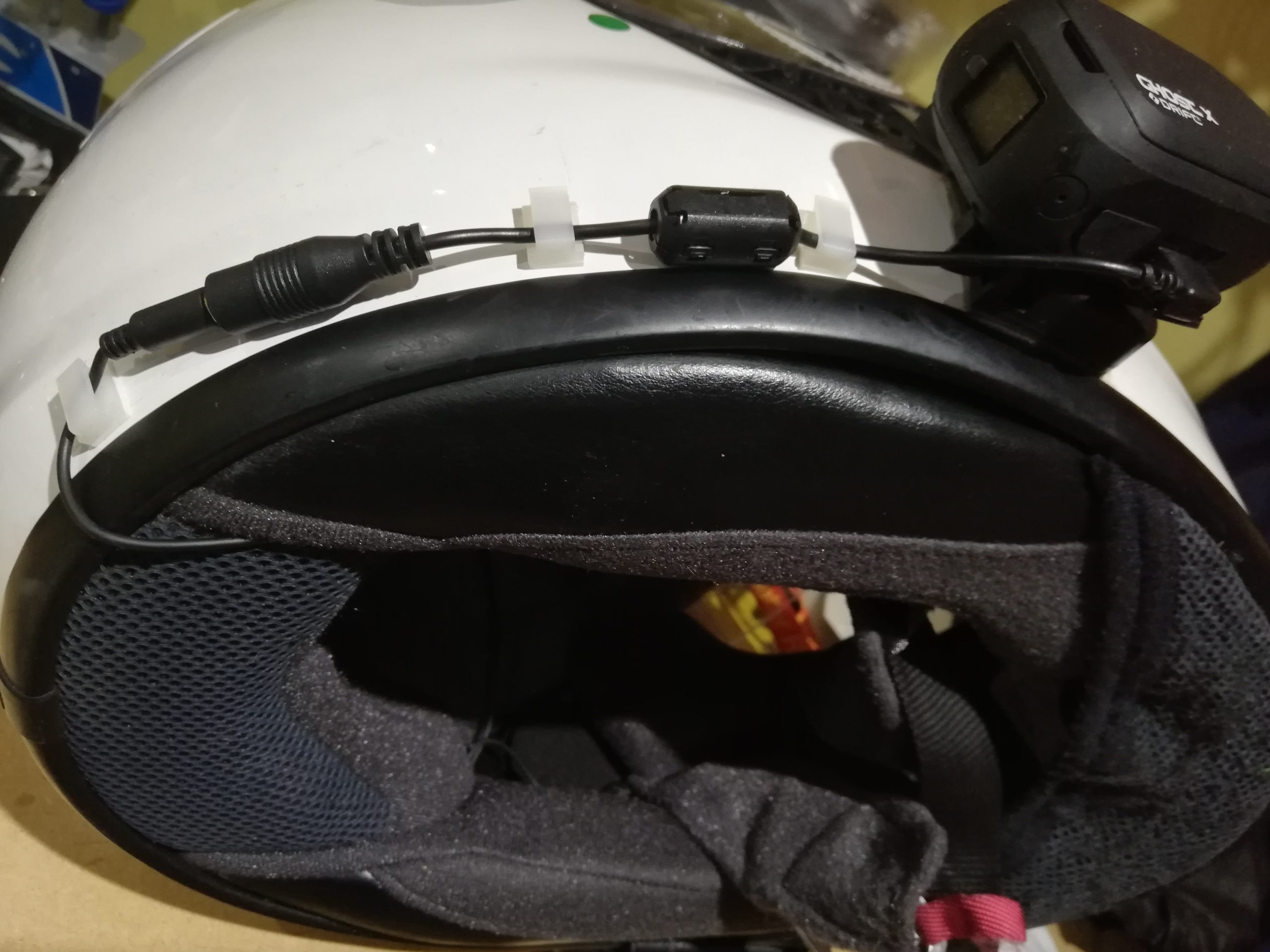
Software
For my editing I use Adobe Premiere Elements 2018. I learned Photoshop many moons ago and still enjoy using it for my photography, so I got both in a bundle for around £105. Premiere Elements doesn’t have all the bells and whistles of Pro, but it has everything needed to create some fun videos, put titles, multiple video tracks, add photos and animations plus many other things.
When a video is finished, Premiere Elements has a function to share it directly to YouTube, Facebook or Vimeo, or you can export an MP4 video file and share it via WhatsApp, Telegram, email, TikTok or whatever takes your fancy.
You can see the videos I’ve created on my YouTube channel, or listed here: https://www.noobiker.com/my-videos/
